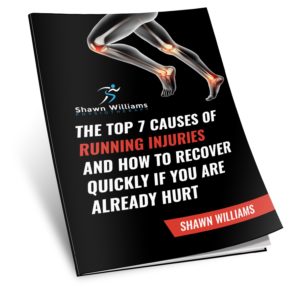What is Iliotibial band syndrome?
The iliotibial band is a sheet of connective tissue that runs along the outside of your thigh, all the way from your hip to the top of you shin. Iliotibial band syndrome, also known as Iliotibial Band Friction Syndrome, is the one of the most common overuse injuries of the knee. It develops gradually from repeated trauma to the IT band as it runs along the outside of your knee joint. The pain is thought to be the result of the compression or rubbing of the IT band and the bursa, a fluid filled sac, possibly causing inflammation.
What causes Iliotibial band syndrome?
IT band syndrome is most common in long-distance runners or cyclists, especially those who frequently train on hilly or sloped terrain. While, certain people may be more prone to Iliotibial band syndrome due to their anatomical structuring, a quick increase in training distance and/or a change in training surface commonly contribute to its development. Weak glutes and/or tightness in the muscle that attaches to the IT band, the Tensor Fascia Latae (TFL), can also increase your susceptibility to IT band syndrome.
How do I know that my pain is Iliotibial band syndrome?
A sharp or burning pain on the outside part of your knee is characteristic of Iliotibial band syndrome. Swelling near the outside portion of your knee joint may also be present. Generally, the pain is worse with activity (for example, running or cycling), and decreases with rest. The pain frequently worsens when going down hill or stairs.
If you think you may have Iliotibial band syndrome your best option for a full and quicker recovery is to contact a Physiotherapist in who is an expert in manual therapy or “hands on therapy.” They will be able to accurately assess you diagnose you and identify which factors need to be corrected to resolve your iliotibial band syndrome and other types of knee pain.
Importance of Physiotherapy in Iliotibial band syndrome treatment
Iliotibial band syndrome, or ITBS, is one of the most common overuse injuries of the leg, particularly in individuals involved in endurance sports. It accounts for up to 12% of running injuries and up to 24% of cycling injuries. Iliotibial band syndrome can be treated effectively by a skilled physiotherapist. Physiotherapists can help people with ITBS lessen pain, restore movement, and return to activities and sport.
When people tend to leave Iliotibial band syndrome untreated further muscle weakness continues to develop and this leads to decrease in function and activity level which can lead to a more chronic ongoing problem that takes much longer to resolve.
If you have any of the following symptoms you may suffer from Iliotibial band syndrome and should seek help from a skilled physiotherapist so that you can get back to your running, cycling or sports as quickly as possible.
• Stabbing or stinging pain along the outside of the knee.
• A feeling of the IT band “snapping” over the knee as it bends and straightens.
• Swelling near the outside of your knee.
• Occasional tightness and pain at the outside of the hip.
Continuous pain following activity, particularly with walking, climbing, or descending stairs, or moving from a sitting to standing position.
Physiotherapy treatment focus
Restoring Range of motion.
Often, abnormal motion of the hip, knee, and foot joint can cause ITBS because of how the band attaches to hip muscles. Your physiotherapist will assess the motion of your involved leg compared with expected normal motion and the motion of the hip on your uninvolved leg. They will then prescribe exercises and manual therapy to restore the movement
Improving Muscle strength.
Hip and core weakness can contribute to ITBS. The core refers to the muscles of the abdomen, low back, and pelvis. Core strength is important, as a strong midsection will allow greater stability through the body as the arms and legs go through various motions. For athletes performing endurance sports, it is important to have a strong core to stabilize the trunk and pelvis during repetitive leg motions. Your physical therapist will be able to determine which muscles are weak and provide specific exercises to target these areas.
Manual therapy.
Physiotherapists with an expertise in manual therapy, will use their hands to move and manipulate muscles and joints to improve motion and strength. These techniques can target areas that are hard to treat on your own. To ensure your Physiotherapist of choice has adequate training in manual therapy look for the FCAMPT (Fellow of the Canadian Academy of Manipulative Physiotherapy) designation behind their name. This is an internationally recognized accreditation that ensures your physiotherapist has an expertise in manual and manipulative therapy.
Functional training
Even when an individual has normal motion and strength, it is important to teach the body how to perform controlled movements so that you can successfully return to the sports that you love to do.
What can I do at home for Iliotibial Band Syndrome?
- IT Band/TFLStretch: Standing upright, start by crossing your affected leg behind your unaffected leg. Now lean slightly forward and towards the unaffected side. You can use a chair or wall to help keep your balance if necessary. Hold the stretch for 30 seconds; repeat 3 times, 2-3 times per day.
- Foam Rolling: Lie on your affected side with the foam roller positioned under the outside of your thigh between your body and the ground. Hold your upper body up with both arms, cross your top leg in front, and place your foot on the ground for support. Slowly use your arms and planted foot to roll the foam roller up and down the outside of your thigh, being careful not to roll over your hip and knee joints. Do this for approximately 30 seconds; repeat 3 times, 2-3 times per day.
- Clamshells: Lying on your unaffected side, stack your hips and feet, and bend your knees to about 90 degrees, keeping your feet in line with your hips. With your feet remaining together, squeeze your glutes and raise your top knee as much as you are able without rotating your hips. Slowly lower your top knee to the starting position. Repeat for 10 reps, 3 sets, 2-3 times per day.
- Avoid painful activities, and then return gradually: Allowing time for your body to heal is important. Attempting to “push through” the pain is likely to delay the healing process, and lengthen recovery time. Therefore, taking a break from running or cycling (or any activities that cause pain) is usually recommended when recovering from IT band syndrome. The length of this break varies between individuals, but it should be enough time to get your pain under control. Once your pain is more controlled (it is less frequent and less intense), you can begin to gradually return to your activities. It is best to begin with a slow re-introduction to training. For example, start with a short walk/jog; progress by slowly increasing your ratio of jog to walk and/or increasing duration.
If you are in Toronto and suffering from Iliotibial band Syndrome or any other knee pain that has stopped you from running, cycling or another activity that you enjoy doing give Shawn Williams Physiotherapy a call or text at 416-660-4187 for a free phone consultation and take the first step to getting your knee pain under control.



